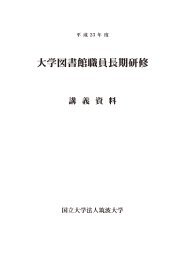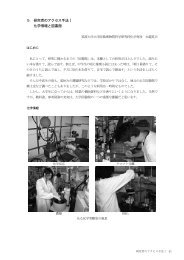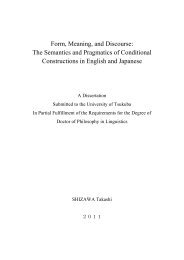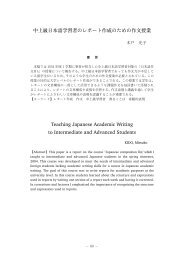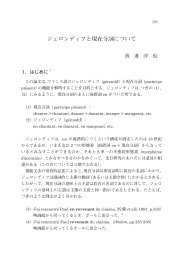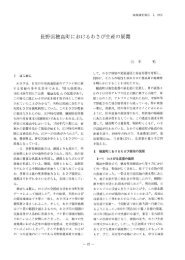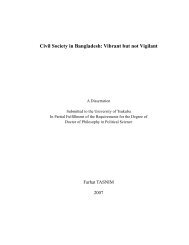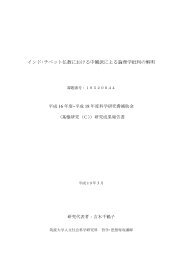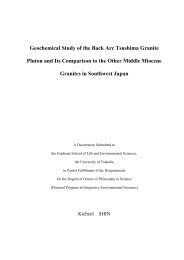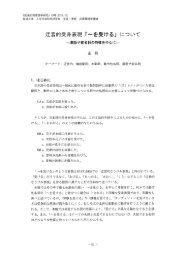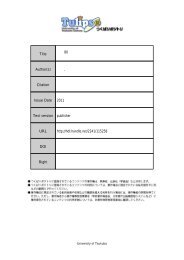Gamma Rays and CarbonIon-Beams Irradiation for Mutation ...
Gamma Rays and CarbonIon-Beams Irradiation for Mutation ...
Gamma Rays and CarbonIon-Beams Irradiation for Mutation ...
Create successful ePaper yourself
Turn your PDF publications into a flip-book with our unique Google optimized e-Paper software.
Only a partial resistance was observed in most of the regenerated plantlets<br />
after toxin selection. In addition, Stierle et al. (1991) isolated six different<br />
phytotoxin compounds from M. fijiensis, having different biological<br />
activity <strong>for</strong> each. The 2,4,8-trihydroxytetralone (tetralone) exhibited host<br />
selectivity comparable to that of the fungal pathogen at the 5µg/5µl level,<br />
following by juglone that was stronger than tetralone in terms of toxicity.<br />
In this research, it seems that the ion beam irradiation promoted<br />
mutation in cells, reacting different when they were confronted with the<br />
toxins. On the other h<strong>and</strong>, Etame (2003) characterizing M. fijiensis toxins<br />
by using a high per<strong>for</strong>mance liquid chromatography (HPLC) <strong>and</strong> gas<br />
chromatography-mass spectrometry (GC-MS) revealed the presence of<br />
juglone, but did not reveal any of the M. fijiensis metabolites already<br />
reported. Once isolated this toxin, banana genotypes possessing different<br />
reactions were used to compare their susceptibility to M. fijiensis<br />
metabolites <strong>and</strong> their sensitivity to the infection by the pathogen. The most<br />
resistant genotypes to juglone (‘Fougamou’, ‘Pisang madu’, ‘M53’ <strong>and</strong><br />
‘Klutuk’) appeared also resistant to the infection, although some cultivars<br />
resistant to M. fijiensis are susceptible to juglone. Globally these results<br />
suggest that juglone could allow to identify the more resistant genotypes to<br />
the infection of M. fijiensis. Lepoivre et al. (2002) described that 250 ppm<br />
of juglone is required to induce necrosis in the leaf puncture bioassay using<br />
selected plants from embryo cell suspension of ‘Three h<strong>and</strong> planty’,<br />
however, the selected plants did not show higher resistance to black<br />
Sigatoka than the mother plant.<br />
Tables 10 <strong>and</strong> 11 shows the raw data obtained in the variables<br />
DDP-days, II-% <strong>and</strong> LDNA-% <strong>for</strong> ‘Cavendish Enano’ <strong>and</strong> ‘Williams’,<br />
respectively.<br />
90



